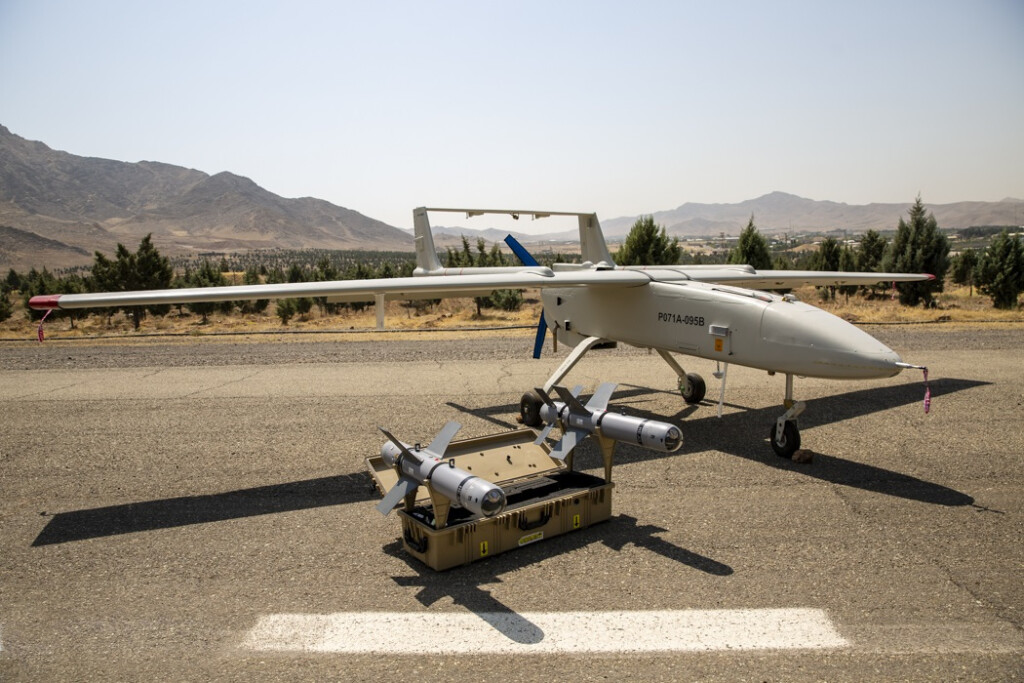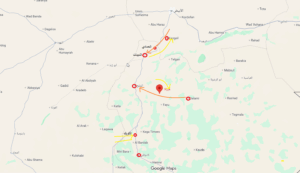Sudan war: ‘Iranian drones played decisive role in Omdurman battle’

An advanced Iranian Mohajer-6 drone, as supplied by Teheran to the Sudanese Armed Forces (File photo: Hadi Hirbodvash / Fars Media Corporation / CC BY 4.0)
By Ashraf Abdelaziz
Iranian Mohajer-6 drones played an important role and were a ‘decisive factor’ in the success of the Sudanese Armed Forces (SAF) battle to wrest control of the National Radio and Television Corporation buildings from Rapid Support Forces (RSF) control on Monday.
As previously reported by Radio Dabanga, the SAF took control of the National Radio and Television Corporation in old Omdurman on Monday, after the Rapid Support Forces (RSF) had occupied the buildings since the outbreak of the war in mid-April last year.
Last year, a SAF delegation allegedly visited Iran to purchase combat drones. In late January, the RSF claimed they downed an Iranian-made Mohajer-6 drone in Khartoum state.
In January, Bloomberg quoted three Western officials, who asked not to be identified, as saying that Sudan had received shipments of the Mohajer-6, a single-engine drone manufactured in Iran by Quds Aerospace Industries and carrying precision-guided munitions.
Analysts who have checked satellite imagery have confirmed the drone’s presence in Sudan, according to Bloomberg.
Advanced drone
“Drones are one of the biggest achievements in recent times in the field of defence and security industries,” Brig Gen Jamal El Shaheed told Radio Dabanga yesterday. “They appeared a long time ago, but the beginning was traditional even in some technologically and technologically advanced countries such as America, Russia, China, Japan, North and South Korea.”
Drones had multiple uses such as reconnaissance, photography and espionage within the framework of information warfare, and was initially a monopoly for those developed countries. Later, with the development in production, these countries were self-sufficient in various areas, including the field of defence and security industries, and drones began to appear in the global market, especially in the vital field of each of these great countries (the vital field is the superpower and other allied countries).
“In Sudan, the drones entered our country since the 1980s, and later we used drones in reconnaissance and photography, and currently the armed forces use drones with high efficiency and effectiveness that achieved many goals in the battle of national dignity,” the military expert explained.
“The success and victory in the battle for the broadcast centre has does not come in a vacuum; there is prior planning for the battle and tightening the noose on the enemy, and because we are fighting in residential areas, the theatre differed from the previous where we were fighting in the bush. Therefore the army used alternative plans sophisticated isolated the enemy in radio and television after encircling him for a long time and thus was able to tighten control,” he added.
“The RSF force advanced towards the radio building was destroyed by drones. Sudan now has advanced types of drones that can fly in a distance of 85 kilometres, the battle is now exposed and the army has the initiative.
Costly relationships
Another military expert, who preferred to remain anonymous, told Radio Dabanga: “After the April 15 war, reports, information and evidence confirmed that Iran is supplying the Sudanese army with drones, and that Sudan received shipments of the Mohajer-6 drones, Ababil and Mohajer 4, on condition that the SAF would not fight not fight the Houthis in Yemen, and work to provide weapons to extremist groups to strike General Haftar in Libya, as well as the establishment of a military base in the Red Sea.”
In 2012, Iran sent advanced nuclear equipment, including centrifuges, to Sudan, prompting many observers to say that as part of the deal, Iran also plans to re-establish a uranium enrichment centre in the northern Khartoum region.
Alan Boswell, director of the Horn of Africa project at the International Crisis Group, believes that Tehran’s restoration of an ally in Sudan, especially along the Red Sea, would be a big win for Iran, but it would worry other regional and Western powers, and highlight the importance of Sudan’s 640-kilometer Red Sea coastline, which countries such as China, Russia and Türkiye are vying for.











 and then
and then